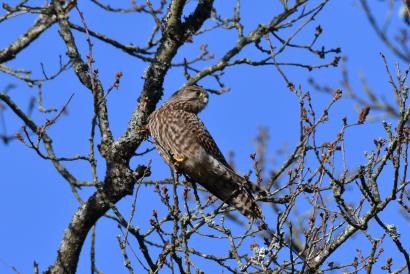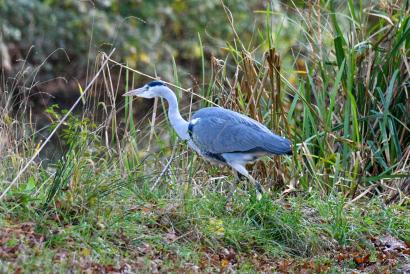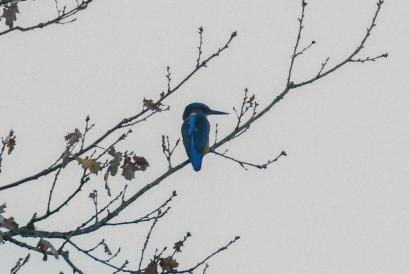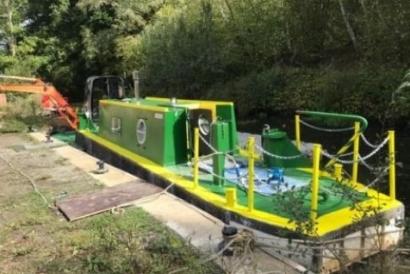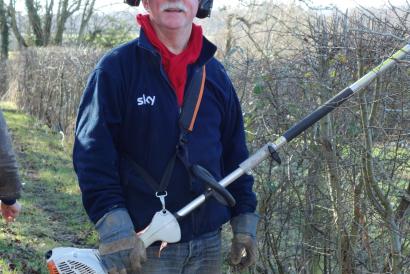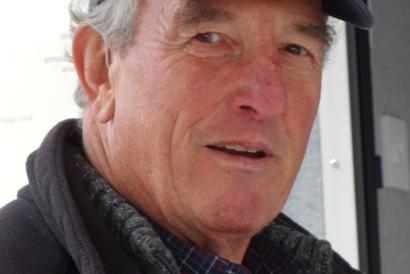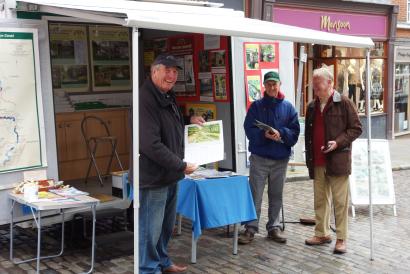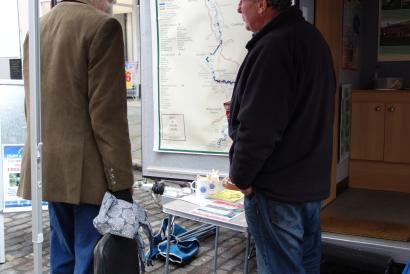When the thermometer on the car dashboard flashed 0 deg C, I did question why I thought joining the Midweek Working Party (MWWP) for a day was a good idea. Who in their right mind would want to be working outside on a towpath in January?
Yet arriving at the Haybarn stretch in West Sussex my reservations began to thaw. The canal looked glorious in the watery winter sunshine, with the River Arun and the South Downs beyond framing the vivid blue skies in the background. Then there was the calm; with no road noise there was a tranquility and stillness rarely to be found in my busy life.
Armed with gloves, some loppers and saw I was set to work by team leader Margaret alongside the other 18 or so team members, tasked with clearing some of the undergrowth encroaching on the towpath, removing weeds from the hedgerow and cutting the hedge itself. It was physical work – the freezing temperature was soon forgotten - but taking my cue from the others around me I saw I could stop, stretch and simply admire the view when needed.
The conversation flowed gently as members settled to their jobs, working alongside one another easily and confidently. The team had been working this stretch of several miles for some weeks, moving along the towpath from Lee Farm Bridge to Haybarn Swing Bridge.
For several of the members, the area is particularly familiar – they were among those to have planted the hedge we were now taming more than 10 years ago. Tony is one such MWWP member, who remembers the planting fondly and with a clear sense of satisfaction. He travels a fair distance to volunteer each week and is among the many MWWP regulars, some of whom have been spending their Wednesdays volunteering with the Trust for years. Just like Ian, who has been with the MWWP for 25 years, and is the longest serving. His interest in the Basingstoke Canal (where he drove a dredger) led him to the Wey & Arun Canal Trust. He’s now the lengthsman for Elmbridge as well as MWWP stalwart.
Then there’s Trish, who proudly states she was the 2,000th WACT member. After being presented with theatre tickets by Timothy West himself to mark the occasion she felt she had better start doing something else to help the Trust. That was back in September 2005 and she hasn’t stopped yet.
There are newcomers, too, of course. Paul joined the working party in June after being a WACT member for four or five years. When he retired as a civil engineer working for Thames Water he found he had time on his hands. Michael is another new recruit, also being a part of the group since the summer. He’s already completed a hedge-cutter course and is set to do another covering the safe use of pesticides in readiness for the battle with giant hogweed.
Whether the members are new or old, one common thread ran through my conversations with them. While they clearly get satisfaction from doing an important job maintaining the canal and its towpath and are keen to see the canal fully restored, the rewards of working as part of the MWWP team run deeper.
There is a sense of achievement after a day’s labour and obvious advantages from keeping fit and active in the fresh air – members say they always sleep well on a Wednesday evening and one says he has actually lost weight since retiring and volunteering – but the benefits aren’t all physical.
There’s the social side of working with others in a common aim. Downing tools for coffee and then lunch, the team gather to chat around the fire, and the fact the each comes from a different background matters not a jot. Former-aircraft electrician sits next to High Court Judge, ex-nurse next to ex-salesman.

